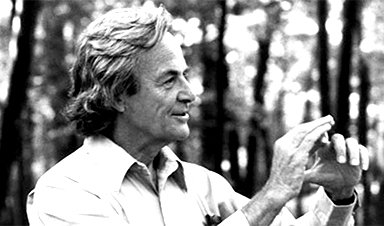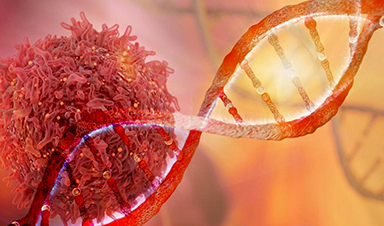 Richard Feynman gave his famous talk “There’s Plenty of Room at the Bottom” (Original Transcript Available Here : http://muonray.blogspot.ie/2012/12/ri…) on December 29th 1959 at the annual meeting of the American Physical Society at the California Institute of Technology (Caltech) as his vision on how physics and engineering could move in the direction that could eventually create nanotechnology.
Richard Feynman gave his famous talk “There’s Plenty of Room at the Bottom” (Original Transcript Available Here : http://muonray.blogspot.ie/2012/12/ri…) on December 29th 1959 at the annual meeting of the American Physical Society at the California Institute of Technology (Caltech) as his vision on how physics and engineering could move in the direction that could eventually create nanotechnology.
Really good ideas and strokes of genius are often manifest in the right questions being asked: How small can information be encoded? How can information be written? How can information it be read? All of these important “Hows” were asked by Feynman in a time when computers had to be put in large rooms and when the impending space race was forcing engineers to do some serious strategic thinking in making technology small enough to be lifted by rockets into space to function as serious tools in scientific exploration and defence.
Feynman himself may not have invented the technology we see in the development and continuity of the computer age, but the fact that even in the early 1960’s nanotechnology was being considered as a serious field of study was definitely a factor contributing to the boom in computer technology seen in the late 20th century and continues to reach more spectacular levels of sophistication in the 21st century.
Jump 25 years forward into the year 1984, when Feynman tries to retell his 1959 lecture from a more modern perspective in that many aspects of his vision have been fulfilled, particularly with the invention of the electron microscope, the atomic force microscope and experimental manipulation of the atomic scale of matter. Also discussed is the current practical field of photolithography for the manufacture of bipolar transistors and junctions used in computer chips done on an industrial scale and how this process continues with ever decreasing wavelength capabilities of lasers from UV to X-rays.
Feynman also discusses the boundaries of miniaturization and how the scale differences affect the function of certain aspects of technology as well as in nature. In the true spirit of Feynman, the discussion goes into the colorful details and gives diagrammatic examples of how this field had progressed from 1959 to 1984.
We can only imagine how Feynman would have felt about the modern developments in nanotechnology in the 21st century where entirely exotic principles of physics may begin to become technologically significant, including vacuum fluctuations and quantum entanglements. Without a doubt he would have found our developments exciting but always within the realms of understanding by studying the most fundamental language of nature, quantum mechanics, to bring our macroscopic brains into visualizing, however abstractly, the tiny machinery of nature.
Image Credit: Shutterstock.com
News This Week
Mystery Solved: Scientists Find Cause for Unexplained, Deadly Diseases
A study reveals that a protein called RPA is essential for maintaining chromosome stability by stimulating telomerase. New findings from the University of Wisconsin-Madison suggest that problems with a key protein that helps preserve chromosome stability [...]
Nanotech Blocks Infection and Speed Up Chronic Wound Recovery
A new nanotech-based formulation using quercetin and omega-3 fatty acids shows promise in halting bacterial biofilms and boosting skin cell repair. Scientists have developed a nanotechnology-based treatment to fight bacterial biofilms in wound infections. The [...]
Researchers propose five key questions for effective adoption of AI in clinical practice
While Artificial Intelligence (AI) can be a powerful tool that physicians can use to help diagnose their patients and has great potential to improve accuracy, efficiency and patient safety, it has its drawbacks. It [...]
Advancements and clinical translation of intelligent nanodrugs for breast cancer treatment
A comprehensive review in "Biofunct. Mater." meticulously details the most recent advancements and clinical translation of intelligent nanodrugs for breast cancer treatment. This paper presents an exhaustive overview of subtype-specific nanostrategies, the clinical benefits [...]
It’s Not “All in Your Head”: Scientists Develop Revolutionary Blood Test for Chronic Fatigue Syndrome
A 96% accurate blood test for ME/CFS could transform diagnosis and pave the way for future long COVID detection. Researchers from the University of East Anglia and Oxford Biodynamics have created a highly accurate [...]
How Far Can the Body Go? Scientists Find the Ultimate Limit of Human Endurance
Even the most elite endurance athletes can’t outrun biology. A new study finds that humans hit a metabolic ceiling at about 2.5 times their resting energy burn. When ultra-runners take on races that last [...]
World’s Rivers “Overdosing” on Human Antibiotics, Study Finds
Researchers estimate that approximately 8,500 tons of antibiotics enter river systems each year after passing through the human body and wastewater treatment processes. Rivers spanning millions of kilometers across the globe are contaminated with [...]
Yale Scientists Solve a Century-Old Brain Wave Mystery
Yale scientists traced gamma brain waves to thalamus-cortex interactions. The discovery could reveal how brain rhythms shape perception and disease. For more than a century, scientists have observed rhythmic waves of synchronized neuronal activity [...]














Leave A Comment